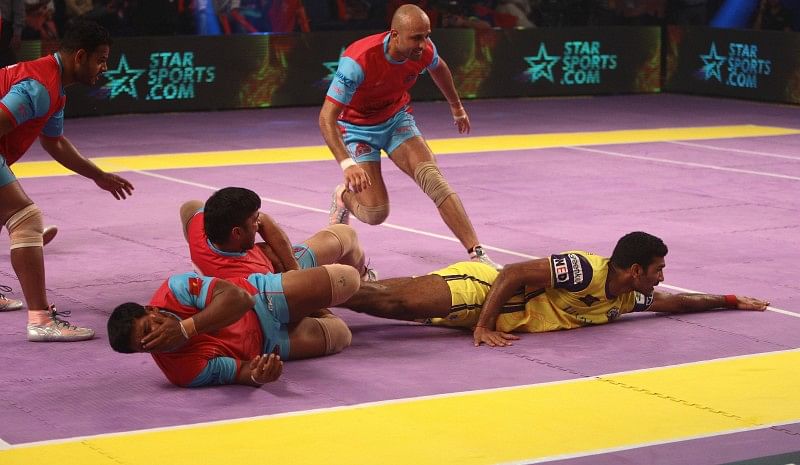
Kabaddi and the art of defence

Kabaddi is a high-intensity contact sport that ebbs and flows relentlessly till the surviving warriors are swept ashore by tide and time. A game lasts all of 40 minutes, but across the two halves of adrenaline-filled action, there is enough drama to script a chapter in an epic narrative.
It is a battle determined through a game of cat and mouse, as teams alternate between offence and defence to weaken the opponent one stab at a time. Each team has seven members, placed strategically on the respective side of the court.
Typically, there are two or three defenders manning the corners when the full complement of seven men are available to the team. These men work in pairs, holding hands to synchronise their movements and keep the raider at bay.
The men in the middle of the defence are typically raiders or all-rounders who are adept at both defence and offence. Most often, it is the defenders in the corner that pounce at the raider in the hope that they find support from the free resources in the middle and cover from the opposite corner.
It is typical of defending teams to take risks based on the nature of the prize. Naturally, the bigger the appetite and reputation of the raider, the greater is the willingness of the defending team to absorb risk in trying to go for the catch.
Raiders develop preferred settling and attack paths as they seek control over an opponent’s court space. Based on these preferences, coaches place their defensive assets in the line of attack trying the land the catch.
Then, there are touch preferences – the famed toe touch of Anup Kumar and the reverse kick of Jasvir Singh, being a couple of examples. Understanding this aspect allows the defensive team to determine the placement and formation of defenders.
The coaches spend hours studying raid patterns to analyse player parameters, such as the leading leg, reach, weaknesses and pockets of vulnerability to enhance the probability of a catch.
Teams also adapt different plans based on the on-court strength – as resources deplete, coaches use substitutions to determine replacements based on the need for a raider or defender to aid recovery.
No wonder then that the progression of these plans through a pacy 40-minute game leaves audience captivated and spell bound as the drama plays out under their hungry gaze.